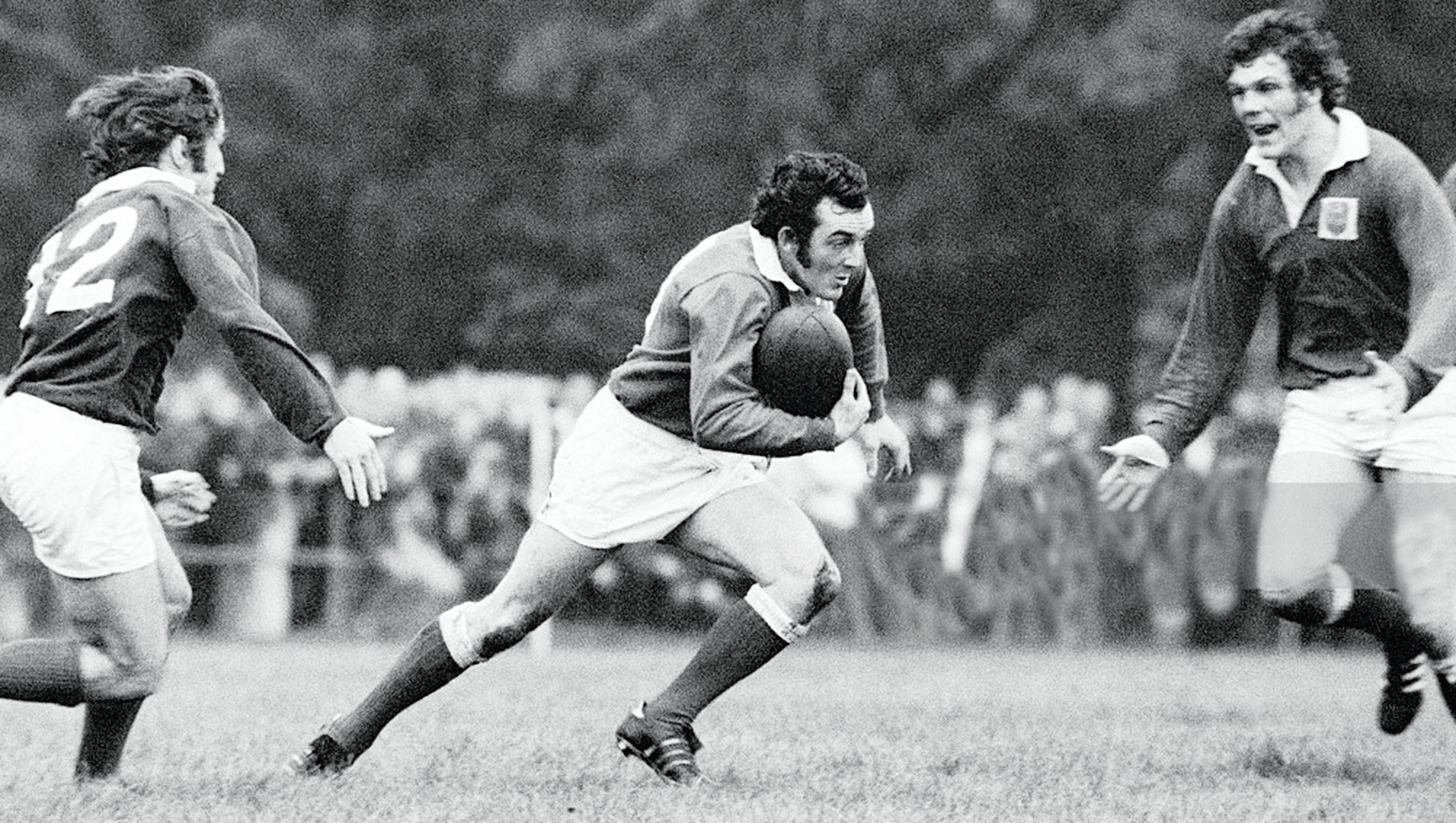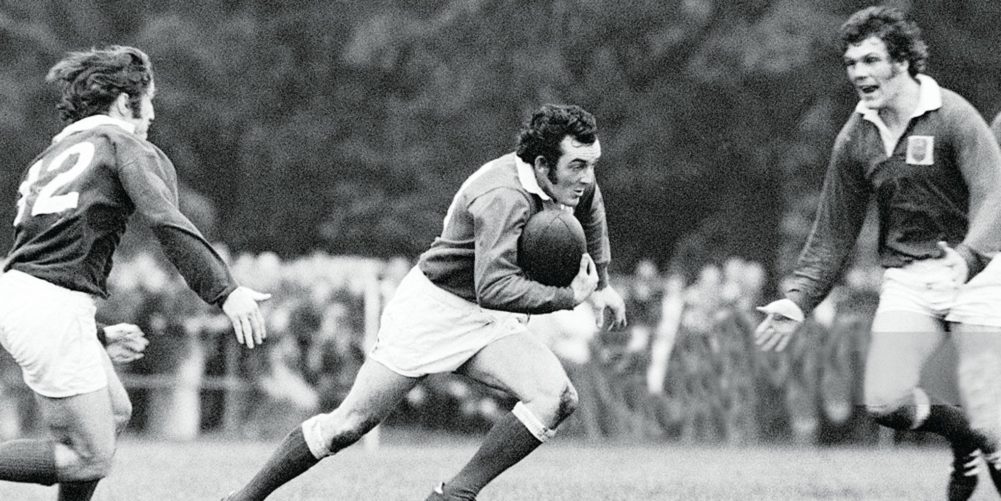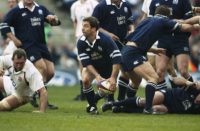Brendan Gallagher delves into some of rugby's most enduring images, their story and why they are still so impactful

Iconic Rugby Pictures: PART 76
Phil Bennett unleashes his side-step October 201975
What's happening here?
It's October 20, 1975 at Old Deer Park, home of London Welsh, and Llanelli and Wales fly-half Phil Bennett is going to work in trademark fashion. In support, on the right as you look, is Lanelli flanker Gareth Jenkins the future Wales coach, while covering across for the Exiles in the 12 jersey is Gerald Davies who often played centre rather than wing for the Exiles.
The story behind the picture?
Bennett had been exciting fans and giving defences nightmares since schoolboy days and the first time he appeared in a senior Wales squad on their tour of Argentina in 1968 although he had to wait until the following season for his first caps.
Initially the luminous presence of Barry John restricted his chances in his preferred position of fly-half but after the shock retirement of the great man in 1972, at the age of 27, the coast was clear and the world was treated to six seasons of Bennett in his pomp.
His pyrotechnics for the Barbarians against New Zealand in 1973, at which point he had only made two Test starts at fly-half, alerted the wider rugby world to his talent and from that point onwards he was a go-to man for Wales and the Lions.
Bennett played rugby the Llanelli way, a wizard from way west who was given a licence to thrill by his club coach Carwyn James. It was James who, before the Barbarians game, had goaded his protégé a little.
“Phil, you have a great side step but I don't suppose you will use it. Yet these All Blacks are made to be sidestepped. You could sidestep them off the park.” Those words were ringing loudly in his ears in the third minute as he chased Bryan Williams' difficult bouncing kick deep into his own 22. And so it began…
Bennett rarely went into his shell, he was always box office and there would have been a buzz around Old Deer Park ahead of this game.
What happened next?
Nearly 46 years on I have no idea how this particular play panned out but its fun to conjecture because with Bennett all dreams were always permissible.
Blessed with real gas over 20 or 30 metres – he played on the wing in his second Test, against the Boks in 1970 – he might just have hit the turbos and exploited the gap which he seems to have spotted ahead of him.
He would, however, be well aware that the covering Gerald Davies, his long time Wales colleague, was one of the few players in Britain with the explosive pace to match him. Nonetheless he might have just fancied the challenge because he was that kind of player – beat Gerald on an outside arc and then readjust and perhaps look for the killer pass
Then there is the obvious option of a switch ball back to Jenkins who is offering himself and calling for the switch. That would be tempting but Bennett still has the ball in one hand, he seems to have dismissed passing for the moment, and perhaps Jenkins, knowing Bennett so well, knows that and is just serving as a decoy.
But what the crowd on the day, and us all these years later, are hoping is that he unleashes one of his staggering thunderclap steps off his left foot to change the direction of play totally and leave even Davies wrong-footed.
Why is the picture iconic?
Phil Bennett was a truly thrilling player who eluded the best efforts of the game's photographers just as easily as he evaded tacklers.
Where is the definitive still picture of his conjuring tricks at the start of that Barbarians try in 1973? It doesn't exist. Where is that moment of genius that put the seal of Wales memorable length-of-the-field try against Scotland at Murrayfield in 1975? Alas it doesn't exist. And where is that other worldly side-step that lacerated the Springboks in 1974? Unfortunately you will look in vain.
But we do have this wonderful image from that master snapper Chris Smith which conveys just about everything you need to know about Bennett. Low slung, hyper alert Celt who is beautifully balanced as he runs close to the ground.
The textbook pedants won't like it, but Bennett has the ball in one hand which is not generally recommended. Bennett's genius though was not passing or kicking out of hand – although he normally performed those tasks efficiently and well – his USP was his devastating running, jinking and stepping.
Once he had declined to pass or kick, defenders went on red alert and fans moved to the edge of their seats. Something special was on the cards
Footnote. Bennett was approaching a tumultuous end to his career at the very top. Later that season he was in sparkling form as Wales marched to the 1976 Grand Slam. The following year, in the absence of Mervyn Davies who had suffered a brain hemorrhage the previous year, he skippered the Lions on the 1977 tour which was a far from happy experience.
Bloodied but unbowed he returned for one final season with Wales and was at his very best in 1978, scoring two tries in the Grand Slam decider against France at Cardiff Arms Park before announcing his retirement from Test rugby after the game, along with Gareth Edwards and Gerald Davies.

























